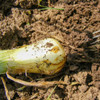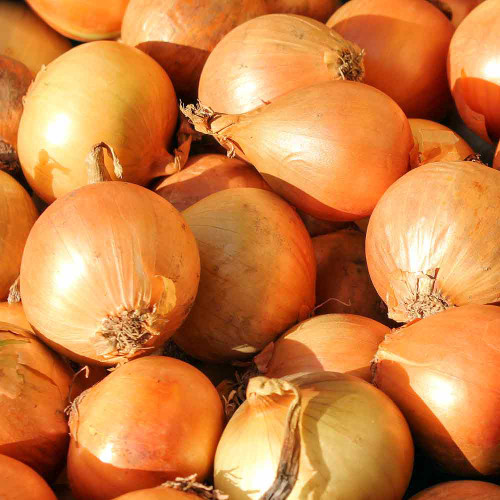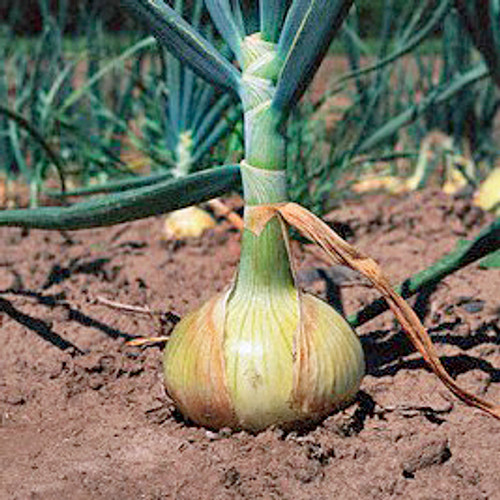Description
Tokyo Long White Bunching Onion Seeds – Traditional Edo Favorite
A Japanese heirloom, this longtime favorite does well in most areas and can be planted for early summer and fall harvests. Worry-free to grow and very satisfyingly quick to germinate, they are great for small gardens and containers.
Perennial, if allowed to flower and overwinter, are known by other names, including Senju onion, Japanese Long onion, Negi, Naga Negi, and Shiro Negi. Tokyo Negi onions are a traditional crop in Japan that was once widely produced.
Japanese farmers traditionally hill the soil around the stem, blanching it to yield more white stalk than green leaf.
The bunching onions have a spicy, slightly sharp taste when raw and a rich, sweet flavor when cooked. They earn their long-favored reputation for their versatility in raw and cooked dishes and are highly valued as a quality-grown aromatic.
Intro
This sweet, mild bunching onion variety forms long, uniform, single-stem stalks, 12-15″ tall, that often looks like a long, slim leek, especially when the soil is hilled around the stalks to blanch them.
It is excellent as a fall and summer bunching onion in colder climates but does not tolerate frigid winters. Plant early spring and early summer for continuous yields.
It can be grown almost year-round in warmer winter climates, especially if there are few frosty nights. Succession plant every three to four weeks for a continual supply of fresh onion flavors.
The white portion is used in braised and simmered dishes and hot pot dishes. The green part is used as aromatics, like how we use scallions/green onions. It removes the odor of meats and fish while cooking in Japan.
The leaves can be harvested during the growing stage, leaving at least 1/3 of the center leaves on the plant.
What, exactly, defines a scallion is an ongoing culinary world debate. Some say any onion harvested before the bulb widens can be considered a scallion. However, the flavor of an Allium cepa (regular onion) scallion is likely to be more pungent than an Allium fistulosum (bunching onion) scallion.
Regular onions grow differently than bunching onions. A. cepa develops a bulb below ground, whereas A. fistulosum will not: there’s no actual physical difference between the stalks/shanks and the bulbs of young plants, except color and flavor.
The word scallion comes from the Greek word askolonion, which refers to the ancient port of Ashqelon, considered the home of the onion. Like many other origin stories, it is off geographically – onions are native to central Asia. But the name had stuck by that time, so here we are.
One can identify the species by looking carefully at the bottom of the green leaves near where they turn white. If the leaf cross section is “D” shaped (or has a flat side), it is A. cepa, a regular onion. If “O” or round, it is A. fistulosum, a bunching onion.
Details
Bunching onions earn their name by happily growing tightly in clusters of elongated, straight leaves and narrow, delicately white, slender bases. The dark green leaves are smooth, stiff, and hollow with small central tubes, growing around 12” tall. The white base of each onion is dense, succulent, and firm, with small, short, white roots growing from the bottom. Green onions are crisp and juicy with a grassy, sweet, and slightly spicy flavor like chives, yet milder than mature onions.
This bunching onion variety is known for its extended portion of tender, white stem; the stalks are smooth, firm, crisp, and succulent.
The white stalks are also composed of many compact layers and never form bulbs at the base. At the top of the stalks, the pale to dark green leaves are primarily hollow with a tubular appearance.
The plant’s leaves sometimes develop tiny, glistening liquid drops in the garden. These dew-like drops are filled with sugar and taste sweet if licked, nicknamed “field diamonds.”
When cut, Tokyo Long White Bunching onions release a fresh, vegetal, and oniony scent and contain a higher sugar content than other onions.
When raw, they have a spicy, green, and somewhat sharp flavor, but once cooked, the stalks and leaves soften into a tender consistency with a rich, vegetal sweetness.
Uses
The onions should be cleaned and stripped of their outermost layer before use.
Tokyo bunching onions are a popular ingredient in hot pots as the stalks can be cooked for extended periods without disintegrating or falling apart. Long cooking allows the onions to develop a sweeter flavor without disintegrating.
They are often sprinkled over noodle dishes, including ramen, soba, and udon, tossed into salads, finely chopped into marinades and dips, or mixed into stir-fries. They can also be cooked into egg-based dishes such as omelets, frittatas, quiches, and scrambles, cut into small pieces, fried into tempura, or infused into baked dishes.
The onions can be chopped and stirred into soy sauce as a dipping component or blended with miso paste to make negimiso, a meat marinade.
History
Tokyo Long White Bunching onions are an Edo vegetable traditionally grown throughout the 23 wards in Tokyo. Modern-day Tokyo was known as Edo when the Tokugawa family ruled Japan from 1603 until 1868. Though Edo Tokyo vegetables have been cultivated for centuries, the term Edo Tokyo vegetable was not established until 2011 by the Central Association of Agricultural Cooperatives in Tokyo.
Vegetables were introduced to Edo when families from across Japan moved into the region and brought their favorite crops for planting in home gardens.
Recent chromosome-level genome sequencing of ancestral species of bunching onions, known as Allium altaicum, confirms one center of origin was around Lake Baikal in Siberia near the Altai mountains, thus the species name. This bunching onion species is still prevalent in the central region of Russia.
The main centers of origin include Northwestern China, middle Asia, and Eastern Russia.
Bunching onions are quite ancient, pre-dating human interaction by several million years, according to genomic sequencing research of tissue samples from the primary sources of origin. They have been deliberately selected, cultivated, and bred for over two thousand years.
The first written record about the crop comes from the first century BC, according to Polish research on the historical growing methods of growing bunching onions in Siberia and China. One of the first records of the onion was in the Chinese herbal text Shen Nong Ben Cao Jing, or The Divine Husbandman’s Classic of Medicinals. The earliest existing text, compiled during the Eastern Han Dynasty (25–220 AD), records and describes 365 medicinals and summarizes earlier medicinal experiences.
The crop spread to Japan during the 8th century AD, most likely through trade. Bunching onions arrived in Europe through trade and exploration during medieval times. Extensively cultivated since ancient times, it has escaped gardens and naturalized in Alaska, parts of Canada, and the northern U.S.
Growing Tip
Bunching onion seeds do not store well, as with all onion types. If not properly stored, germination rates begin dropping after six months, but with cool, dry, and dark conditions, they will sprout reliably for up to 12 months.
Bunching onions grow best in rich, fertile soil amended with well-aged compost, as their short, shallow root systems cannot reach into the soil to obtain their needed nutrients.
Onions need moisture – especially in their first several weeks of growth – and they can not tolerate weed pressure, as the weeds steal soil nutrients from the shallow, short reach of the roots. Mulching onions can help with both moisture and weed control.
A soil temperature of 55 - 68°F is ideal for the best seed germination.
In cold weather climates, add a thick layer of straw or leafy mulch in the fall to protect the plants through the winter and help restart early growth next spring. Remove mulch thicker than one inch in the spring once the soil has warmed up.
In warmer winter climates, succession plant every three to four weeks for a continual supply if you harvest the entire onion at once.
If you let a few continue growing, bunching onions will produce small white flowers in a cluster at the top of a scape or flowering stalk. Once the seeds mature, the flowers scatter the seed to continue growing next season.
Learn More
From the soil to the seed to the food you eat - we'll help you grow your best garden!















